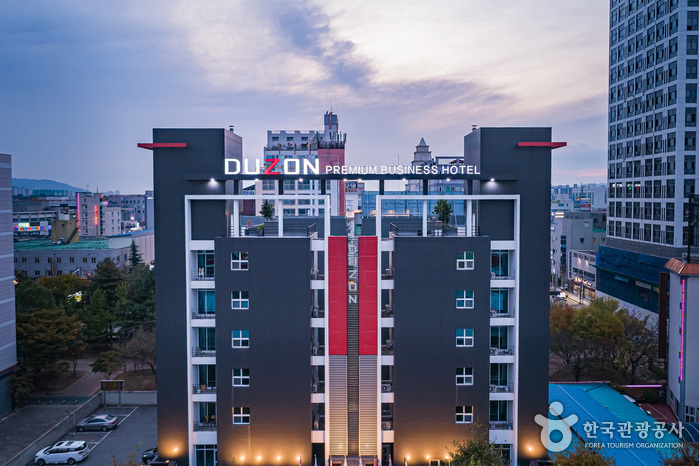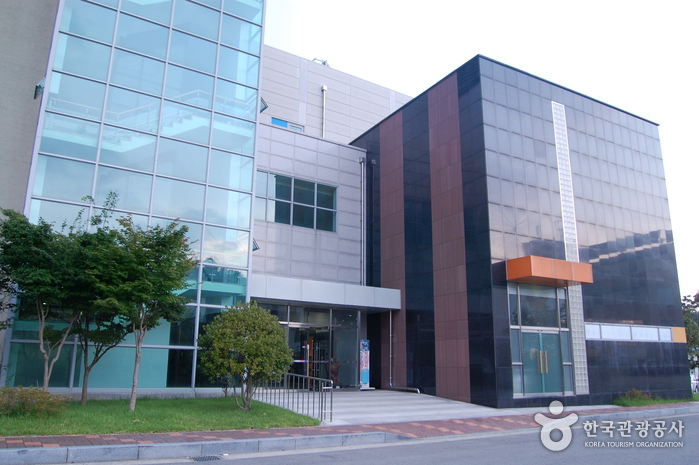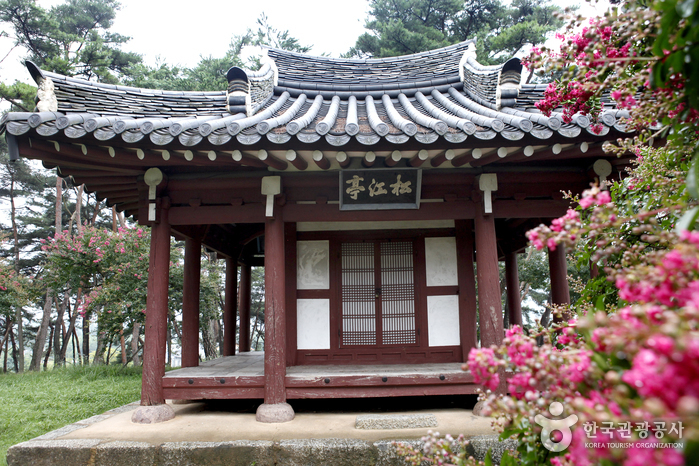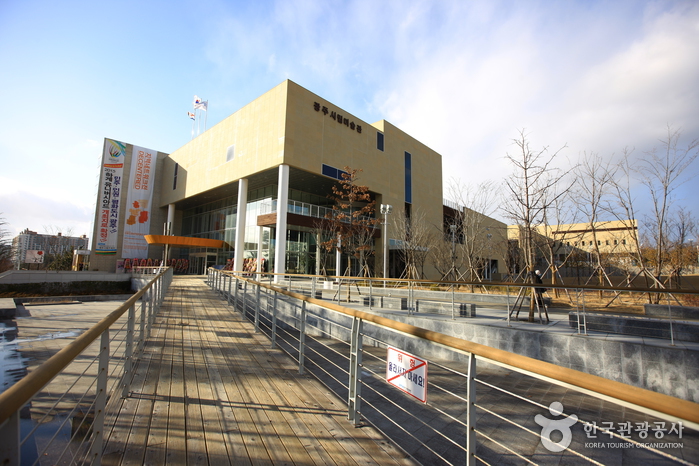Café Limm (카페 림)
5.3Km 2024-11-12
192 Songgangjeong-ro, Bongsan-myeon, Damyang-gun, Jeollanam-do
Café Limm is a beautiful café nestled in the backdrop of lush bamboo forests in Damyang. With bamboo trees both inside and outside the café, it feels like stepping into a bamboo forest. Their signature menu item is the shakecoco (coconut milk espresso shake), made with shaken espresso and coconut milk. Visitors can also capture picturesque moments in this café that resembles a scene from an oriental painting.
Duzon Hotel A (더존호텔A)
5.4Km 2024-12-22
60-37 , Imbangul-daero 826beon-gil, Gwangsan-gu, Gwangju
+82-62-973-6699
Duzon Hotel A in Gwangsan-gu, Gwangju, Jeollanam-do, is located in Gwangju’s high-tech district where the Gwangju Institute of Science and Technology and Government Complex 2 are based. The hotel is just 20 minutes from Gwangju Airport and KTX Songjeong-ri Station, while tourist destinations such as Damyang and Jangseong are also nearby. It is good for an accommodation for academic societies, Namdo tours, and golf trips.
Duzon Hotel (더존호텔)
5.4Km 2024-12-22
60-37 , Imbangul-daero 826beon-gil, Gwangsan-gu, Gwangju
+82-62-973-6699
Duzon Hotel in Gwangsan-gu, Gwangju, Jeollanam-do, is located in Gwangju’s high-tech district where the Gwangju Institute of Science and Technology and Government Complex 2 are based. The hotel is just 20 minutes from Gwangju Airport and KTX Songjeong-ri Station, while tourist destinations such as Damyang and Jangseong are also nearby. It is good for an accommodation for academic societies, Namdo tours, and golf trips.
Uniqlo - Gwangju Yeonje Branch [Tax Refund Shop] (유니클로 광주연제)
5.4Km 2024-04-17
2, Yeonyang-ro, Buk-gu, Gwangju
-
Namdo Folk Food Exhibition Room & Honam Cultural Material Pavilion (남도향토음식박물관·호남문화자료전시관)
5.4Km 2021-11-27
477, Seoljuk-ro, Buk-gu, Gwangju
+82-62-410-6642
Located in Gwangju, the Namdo Folk Food Exhibition Room was established to preserve and promote the local foods of the Namdo region. The museum has a museum shop, both permanent exhibitions and special planned exhibitions, and a studio where visitors can watch a variety of video content related to the local foods. In the Honam Cultural Material Pavilion, literature, clothing, and artwork from the region are on display.
The museum building was designed to resemble both the long, rectangular presses used to make patterned rice cakes and the Ipseokdae Rock of Mudeungsan Mountain, a symbol of Gwangju. Even the colors of the building’s walls hold special significance. The obangsaek (five colors; blue, white, red, black, and yellow) symbolize the cardinal directions, the seasons, the major organs in the body, different tastes, feelings, and philosophy.
Damyang Songgangjeong Pavilion (담양 송강정)
5.6Km 2021-05-14
232, Songgangjeong-ro, Damyang-gun, Jeollanam-do
+82-61-380-2811
Songgangjeong pavilion is located in Wongang-ri, Damyang-gun, Jeollanam-do. It was registered as Jeollanam-do Provincial Monument No. 1 on January 29, 1972.
Joseon dynasty poet Jeong Cheol (pen name, Songgang) composed his famed poem “Samiingok” from this pavilion. Next to it presently stands the Samingok memorial stone. The two structures at this site, Hwanbyeonkdang and Sigyeongjeong, are collectively referred to as
the “Relics of Jeong Songgang.”
Gwangju National Museum (국립광주박물관)
6.8Km 2023-11-28
110 Haseo-ro, Buk-gu, Gwangju
+82-62-570-7000
Gwangju National Museum, opened on December 6, 1978, was established to promote the development of cultural arts and to foster patriotism. Gwangju National Museum’s goal is to conserve cultural values through the collection and preservation of historical and valuable artifacts found in the Gwangju and Jeollanam-do regions as well as make contributions to the community through continuous research, exhibition, and education. With over 130,000 artifacts as well as various educational and experience programs, the museum aims to provide an enjoyable cultural center for visitors.
Olive Young - Gwangju Maegok Branch [Tax Refund Shop] (올리브영 광주매곡)
6.9Km 2024-04-18
319, Seoljuk-ro, Buk-gu, Gwangju
-
Hyusimjeong (휴심정)
7.1Km 2024-03-07
611-25 Imbangul-daero, Gwangsan-gu, Gwangju
Hyusimjeong is a multicomplex complete with Second One, a bakery cafe; Oat, a restaurant offering fusion cuisine; a pop-up store zone; and a gallery; all surrounded by a large garden, creating the perfect location for rest. The garden appears to be in bloom all year round thanks to the advanced landscaping that mixes over 28 species of trees and 30 species of flowering grasses.
Gwangju Museum of Art (광주시립미술관)
7.4Km 2022-09-02
52, Haseo-ro, Buk-gu, Gwangju
+82-62-613-7100
The Gwangju Museum of Art was founded on August 1, 1992, to promote local artists. In 1996, it served as the venue for the Gwangju Biennale. The museum holds over 560 works, including those from Heo Baekryeon, Oh Jiho, Yang Su-ah, and Im Jik-sun, all local artists. In addition to the permanent exhibitions, the museum also has special planned exhibitions and other cultural programs.



![Uniqlo - Gwangju Yeonje Branch [Tax Refund Shop] (유니클로 광주연제)](http://tong.visitkorea.or.kr/cms/resource/23/2886823_image2_1.jpg)



![Olive Young - Gwangju Maegok Branch [Tax Refund Shop] (올리브영 광주매곡)](http://tong.visitkorea.or.kr/cms/resource/19/2886819_image2_1.jpg)

 English
English
 한국어
한국어 日本語
日本語 中文(简体)
中文(简体) Deutsch
Deutsch Français
Français Español
Español Русский
Русский